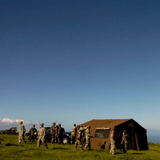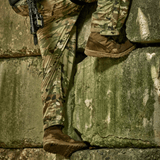How Do I Choose a Medium 3 Day Military Ruck?
How to choose a medium 3 day military rucksack and what are the differences?
A 3 day rucksack is a light backpack that could hold all your essential items for up to three days (hence the term). It's different from normal backpacks because it weighs very little (depending upon the make and material). These packs are made to carry just what you need in gear, water, food, clothes, small shelter, and other essentials and no more. You will also hear the term medium rucksack in addition to 3 day rucks (and similar) as the terms are often used interchangeably.
If you're an experienced hiker, climber, military vet, or hunter then you probably already know all about why it's important to be as light as possible. If not then here are some reasons:
The lighter you carry things on your back during treks, the better it is for your body (less weight = less strain). It also means faster movement through dense vegetation since medium rucks are smaller than their full sized counterparts, add to that you are lighter which means will be less fatigued. These bags are very useful when you're doing multi-day treks with less need for bulky gear. Most of the options we will talk about have the ability to attach additional pouches through the MOLLE system which allows for attaching additional pouches allowing you to bring all of your mission essential gear confidently.
The benefits of having a military style medium ruck
You have space to carry your stuff with less bulk than a regular large rucksack! You can bring along enough food, water, clothes, cooking equipment, gear, etc. It might is also very light in comparison and it's an important piece of kit if you plan to do multi-day treks. Most 3 day rucks have a waist belt and padded shoulder straps along with some type of sturdy support to make these bags feel like you're not carrying anything at all!
Medium rucksacks are generally larger than daypacks (think school backpack size) since they need to accommodate more items like shelter (a tarp or small tent for example), small sleeping bags, small cookstoves, extra clothing, etc. This makes them a great addition to your arsenal of equipment! They are also designed specifically for military personnel to use so you know they can withstand harsh conditions. A lot of them also have quick release buckles, a hip belt, internal pockets, ample room to carry items, and an external frame (or internal frame in some cases) for load distribution. There are even options that allow you to route antenna so communication while on the move is easier.
But wait there's more! There are 3 day backpacks with exterior pockets and a large 3000 cubic inch capacity. Add that to the fact that most are hydration system compatible (think camelback and the like) and designed to work well with body armor, they will quickly become your favorite loading ruck.
Different types of military medium rucks and their pros and cons
The main difference between the different types of medium rucksack options out there is what they are made of, how much padding there is on the back, waist belt, and shoulder straps, if there are any additional compartments for other gear. Also, some are hydration compatible and some allow for storage of extra equipment externally, and some even have a quick release buckle. These are some of the biggest differences you can find when looking at medium backpack options for including your mission essential gear. The ones we are about to go over are all military issued and battle tested.
USMC FILBE 3 day assault rucksack
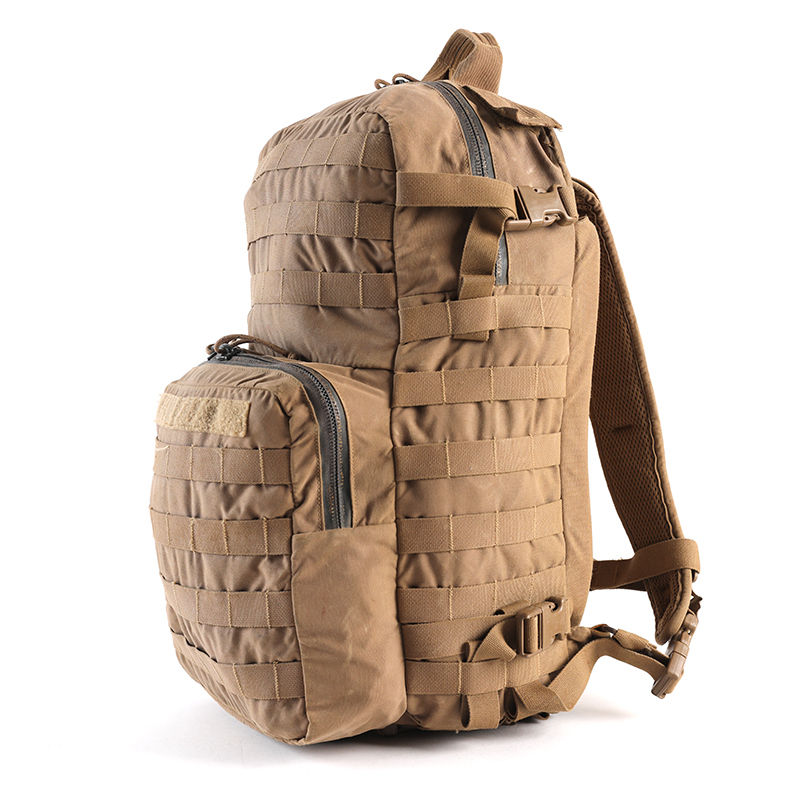
The USMC FILBE has a slightly different design from some of the other medium rucksacks with frames. This one is made for carrying smaller gear and equipment, not to hold a sleeping system or a ton of extra clothing. It does have a surprisingly large amount of room inside for storage in both the main compartment area and the smaller front pocket. It also has a ton of MOLLE which allows for easy attaching of additional pouches so you can customize your loadout depending on mission requirements. When I say a ton I mean it, all three sides of this medium rucksack have MOLLE webbing You can also attach this backpack to the main FILBE rucksack for added mission capabilities. Add on top of all that a removable sturdy frame sheet placed inside a zipper compartment that makes carrying small equipment and lightweight items a walk in the park. Plus it's made of highly durable cordura nylon material that is mildew resistant so it can withstand all sorts of punishment.
Army ACU 3 Day assault ruck
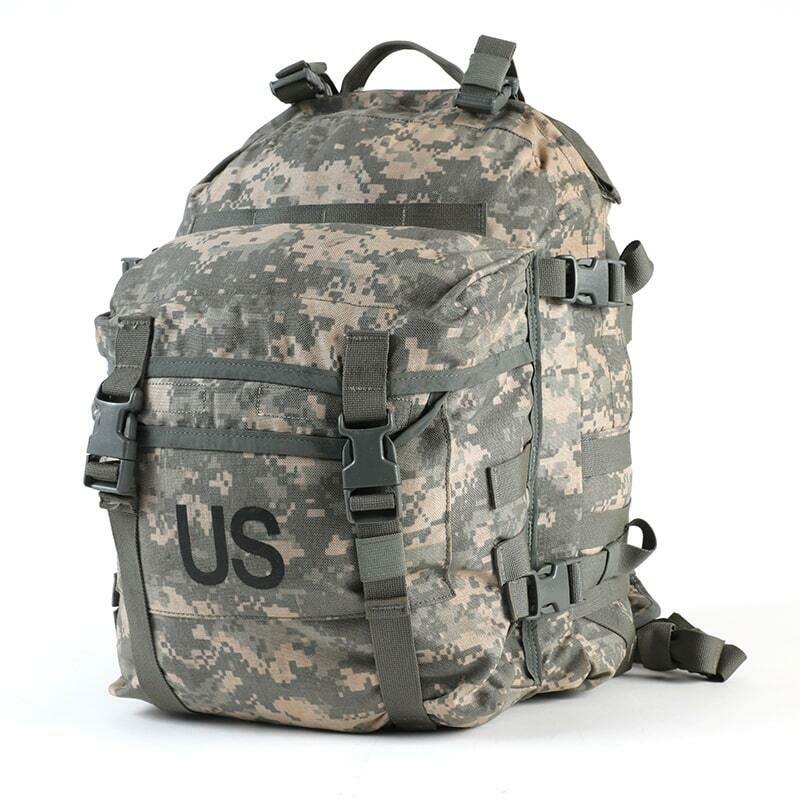
This ARMY issue rucksack has a whole lot of room in the large main compartment, along with an additional front pocket for smaller gear and quick access. It also comes with two detachable straps on the front for carrying sleeping bags or other things that are long and narrow. The frame sheet gives plenty of support for carrying heavy items and weight distribution. That along with comfortable padded shoulder straps, a waist belt, quick release buckles, and internal pockets make this MOLLE II medium rucksack a light combo for your next adventure.
Overall, this bag can do virtually anything you need it to - carry large cubic inch loads or store gear while looking great. This medium rucksack also comes in the Multicam pattern option so you can choose the camo pattern depending on the needs of your mission. All that plus the ability to attach to the MOLLE II full size backpack and a ridiculously sturdy carrying handle give you the best gear configuration options. I have personally used this MOLLE medium rucksack during 2 separate deployments to Afghanistan and it quickly turned into my go to favorite loading ruck.
USMC Issue ILBE MARPT Assault pack
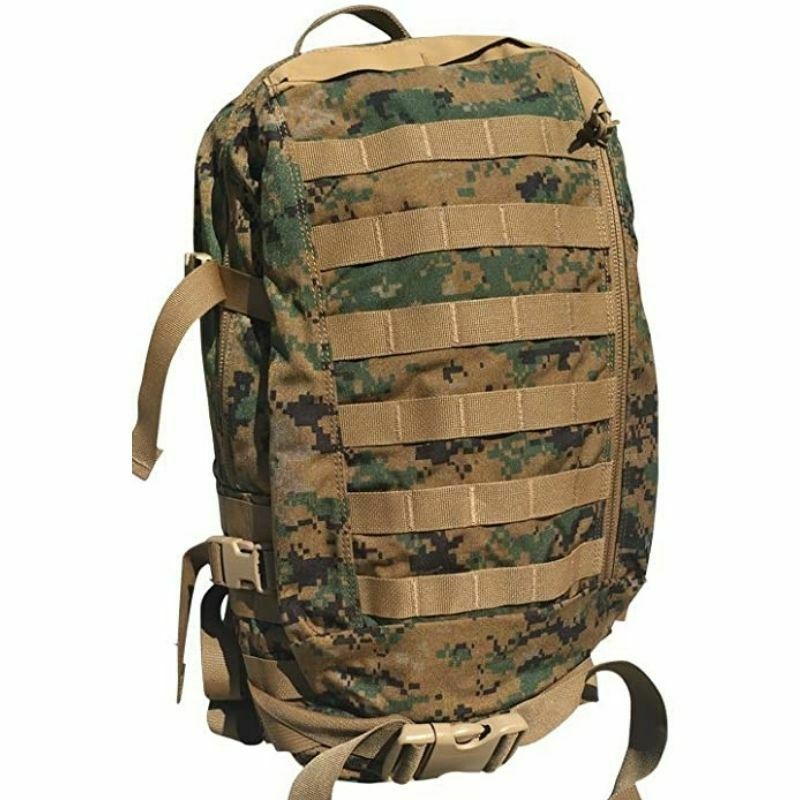
The ILBE MARPT rucksack was designed by the Marine Corps as a replacement for the ARMY MOLLE II system. It is a medium sized detachable pack that can carry you essential gear, after all Marines go with less gear. The backpack itself has 2 compression straps, MOLLE webbing on the front and an internal pocket for storing things like water bladders or other gear. In general, this bag does everything you would need it to do for a short hike and should keep up with you on any adventure. If you plan on having multiple packs to go along with your large equipment storage systems, this might be the best medium rucksack option because it easily attaches and detaches from the larger bag - all without breaking a sweat! The biggest difference of this ruck is it has a narrower profile so makes navigating dense terrain easier than some of the alternatives so helps to lessen the capability gap.
ARMY medium ALICE pack
The old school medium ALICE pack is still highly sought after for a reason. It can carry everything you need and then some in it's durable medium sized package. This bag doesn't have just one or two exterior pockets like most but a whopping three large external compartments. It also boasts durable all the cubic inches of space you need, allows for quick access to equipment, and can easily be attached to the aluminum ALICE frame if needed. This makes it extremely versatile pack for many needs. The straps and metal buckles are also very durable which means they won't break after just a few uses like many of the cheaper day packs you will find out there. The only real downfall is this is an older design so it won't be as comfortable (especially the shoulder strap) when compared to the previously listed medium ruck options.
Recommended items to pack in your new 3 day medium rucksack
- To give you an idea about what you should put into a 3 day backpack such as the Army MOLLE II medium rucksack, here's our list:
- 3 days worth of food and water (minimum)
- One small sleeping bag, one sleeping mat (if it's small enough)
- Extra layers during cold months
- Rain Gear (you even need it in Arizona believe it or not)
- Headlamp with extra batteries
- First-aid kit with essential medication(s)
- Compass, map, whistle, knife, lighter, etc. along with basic tools like a fire starter (lighters go out and don't work when wet!).
- Emergency shelter/tent (in case you get lost) Note: You can also make an emergency shelter out in the woods if you are into bushcraft and the like, it's not as hard as you think! Bring along a tarp for waterproofing and build yourself a basic A frame or lean to shelter and good to go (know this from experience).
- If in doubt about what items should go into your 3 day pack then ask yourself this - when was the last time I went hiking or camping? What did I bring then? Can I survive without these?
Tips on how to pack your gear properly
If you are familiar with the rules of packing then this should be pretty easy. If not, here are some tips for how to pack your new medium rucksack. The general idea is to make it as loaded as possible while still being able to move around freely and easily.
This is my personal opinion though as I'd rather carry as much with me as I can because I go by the old saying "I'd rather have it and not need it, then need it and not have it". If I learned anything during my stint in the Army it's this, packing lists they give you are minimal, keyword minimal. I can't tell you how many times when I was lower enlisted that I wish I had things that weren't on that list. So I learned to compress and stuff as much as I could into all of my packs. This is when I learned to love my Army medium ruck as it's the perfect size for many scenarios.
It may seem obvious but pack items that you'll need first closest to the top. So stuff like food, water, etc. should go on the top portion while sleeping bags or other larger items will go at the bottom of the bag since these won't be needed while hiking.
Pack all your clothes and layers during colder and/or wet months near the top of the bag as well. Putting them in a water resistant compression sack is a good idea for reducing space and keeping the clothing dry.
Always make sure you have your sleeping gear, food, and water within arms reach. You don't want to be digging through your ruck at 3 AM when nature calls trying to find your flashlight you put into one of those deep pockets on the bottom of your bag!
Organize everything as best as possible so you aren't fumbling around with loose items inside the main compartment of your pack. This will also give you an easier time when searching for something specific later on down the road and keep things from shifting and loosening up on you while moving quickly. Utilize the packs that have extra storage pockets and use them to store your immediate need items.
A good rule of thumb is your bag should not weigh more than 1/3rd of your body weight. For example, if you weigh 200 lbs then your backpack should only weigh 66 lbs at max. This is to ensure that you can still move around freely without straining yourself too much because let's face it - the human body was meant to walk and run, not climb mountains with 100 lbs or more on its back (someone should tell the military this)!
Still have questions or need help?
We hope this article gave you some insight into what some of the different options for medium rucks out there and advice on use cases and what to bring along. If you still have other questions about medium rucksacks that weren't answered here then contact us today! Let us know what are some of the activities you will be using the 3 day backpack for and our experts will help you find the best backpack for your needs. We're here to help!






